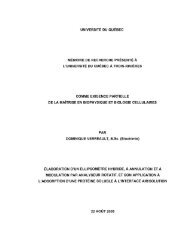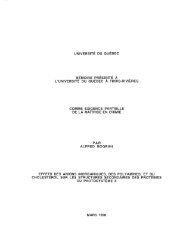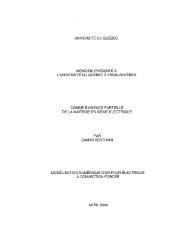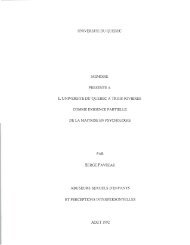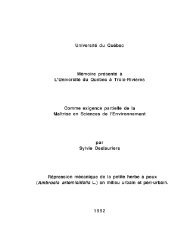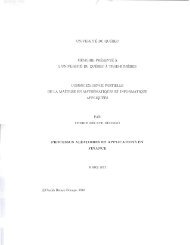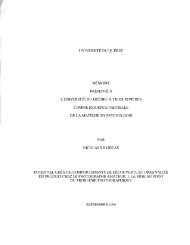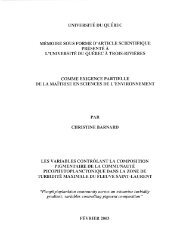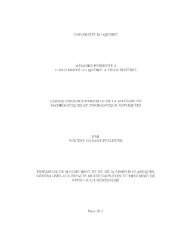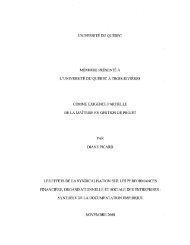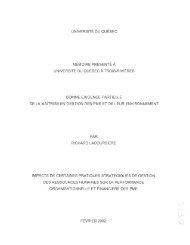Biomanipulation du meunier noir (Catostomus commersoni)
Biomanipulation du meunier noir (Catostomus commersoni)
Biomanipulation du meunier noir (Catostomus commersoni)
You also want an ePaper? Increase the reach of your titles
YUMPU automatically turns print PDFs into web optimized ePapers that Google loves.
3.5.4 Age and length at maturity<br />
During white sucker mass removal, significant decreases in the age at maturity of<br />
both species were observed in all lakes except for brook trout in Lake Des Îles. The<br />
decrease in the mean age at maturity of both white sucker and brook trout is consistent<br />
with their increase in growth, <strong>du</strong>ring white sucker mass removal. Sexual maturity is<br />
more related to the attainment of a given size rather than a given age (Tallman et al.<br />
1996). Consequently, the decrease in the mean age at maturity is related to growth<br />
increases, and thus to a decreased time required to reach the minimum size for<br />
repro<strong>du</strong>ction. Rochet (1998) also found that higher growth rates are associated with<br />
decreased age at maturity. In Lake Des Îles, the fact that there was no significant change<br />
in the mean age at maturity of brook trout <strong>du</strong>ring white sucker mass removal could be<br />
explained by the larger proportion of older indivi<strong>du</strong>als in our samples. Because the<br />
sample sizes were too small for brook trout in this lake, we could not determine if there<br />
were differences in the growth of indivi<strong>du</strong>als <strong>du</strong>ring mass removal.<br />
Significant changes in the mean age at maturity were observed after the cessation<br />
of white sucker mass removal only in Lake Claudette: mean age at maturity decreased in<br />
white sucker and increased in brook trout. In Lake Claudette, where white sucker mass<br />
removal was the most intense, there was no change in the growth of white sucker after<br />
the end of white sucker mass removal. This suggests that there is a time lag in the<br />
response of white sucker (in growth and mean age at maturity) to the changes in intra<br />
specific competition. The increase in the mean age at maturity of brook trout in Lake<br />
Claudette could also be explained by the larger proportion of older indivi<strong>du</strong>als in our<br />
sample after the end of mass removal, as suggested by the decrease in brook trout<br />
recruitment in this lake after that period.<br />
In most cases, the mean length at maturity did not change throughout the<br />
biomanipulation supporting that sexual maturity is more related to the attainment of a<br />
given size rather than a given age (Tallman et al. 1996). However, as we used the mean<br />
length of all mature indivi<strong>du</strong>als, instead of the mean length of indivi<strong>du</strong>als when they first<br />
72



